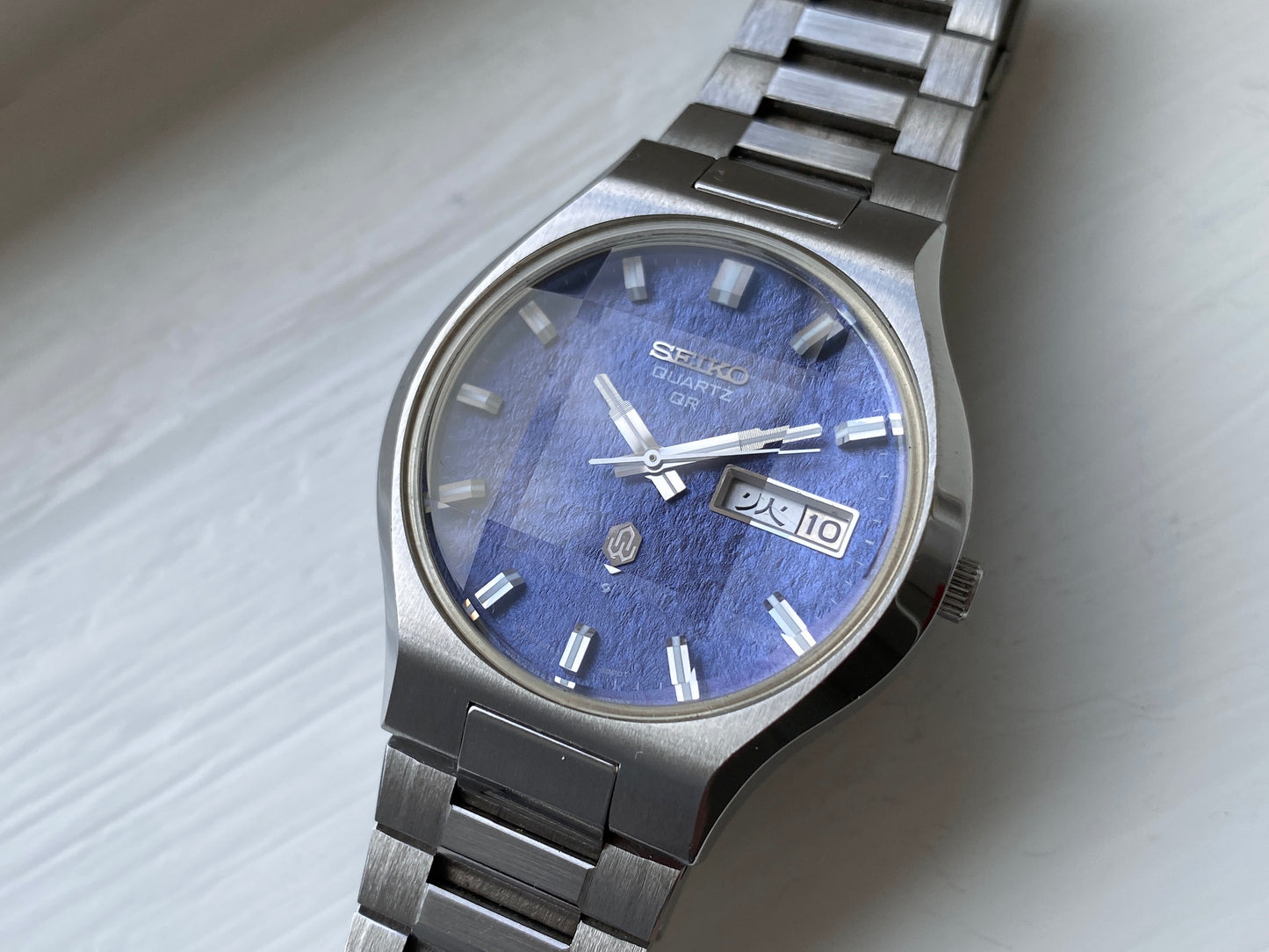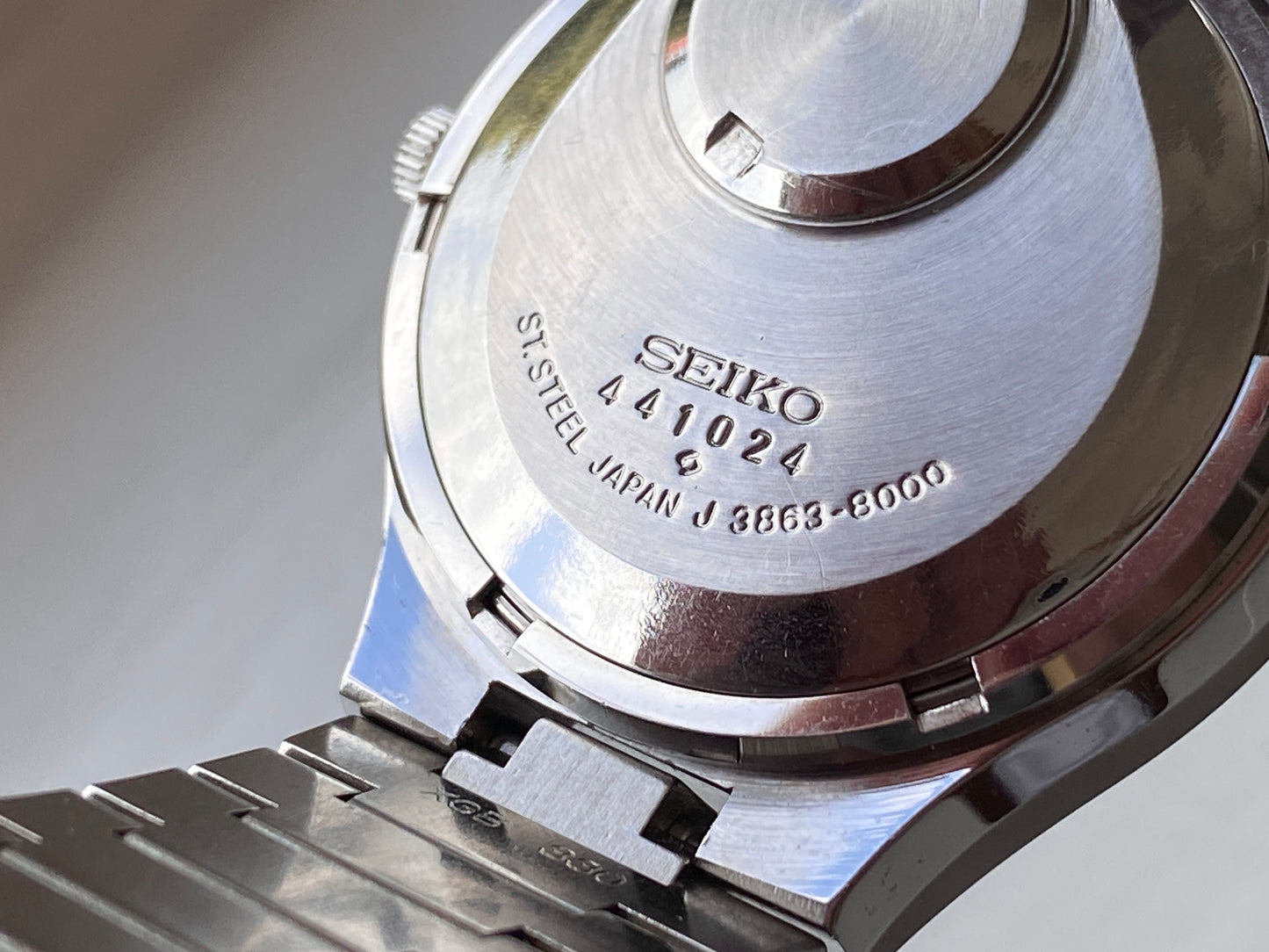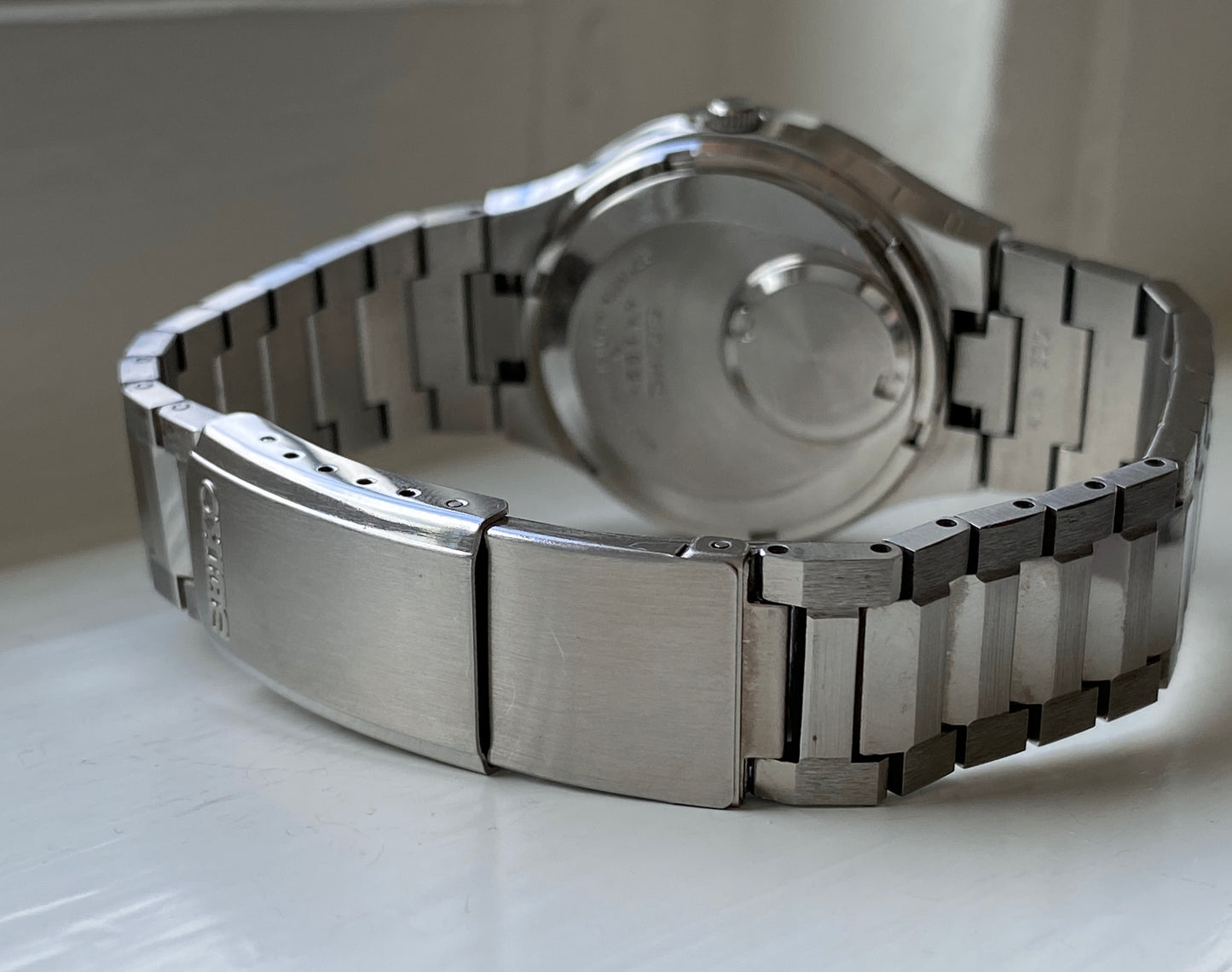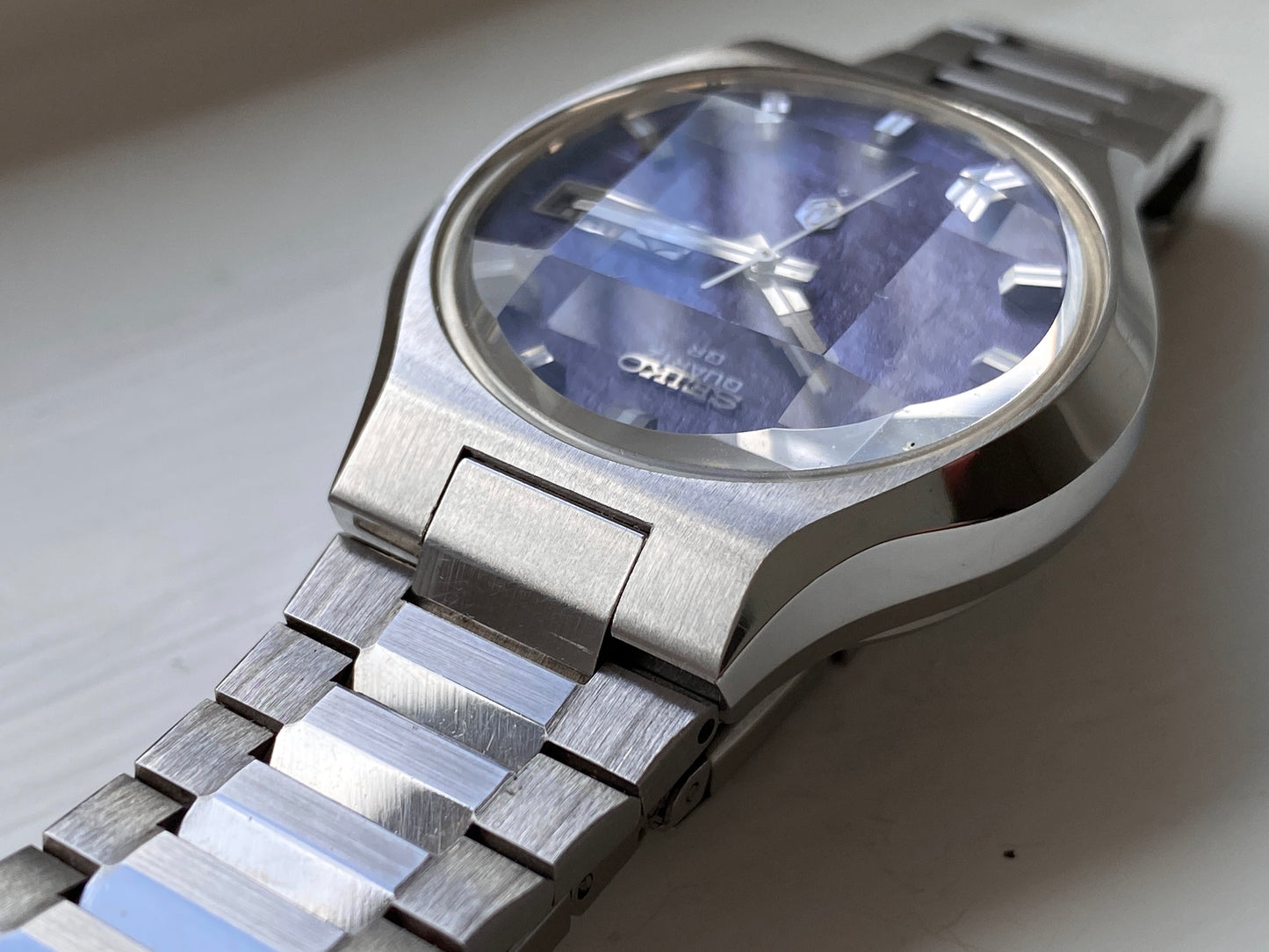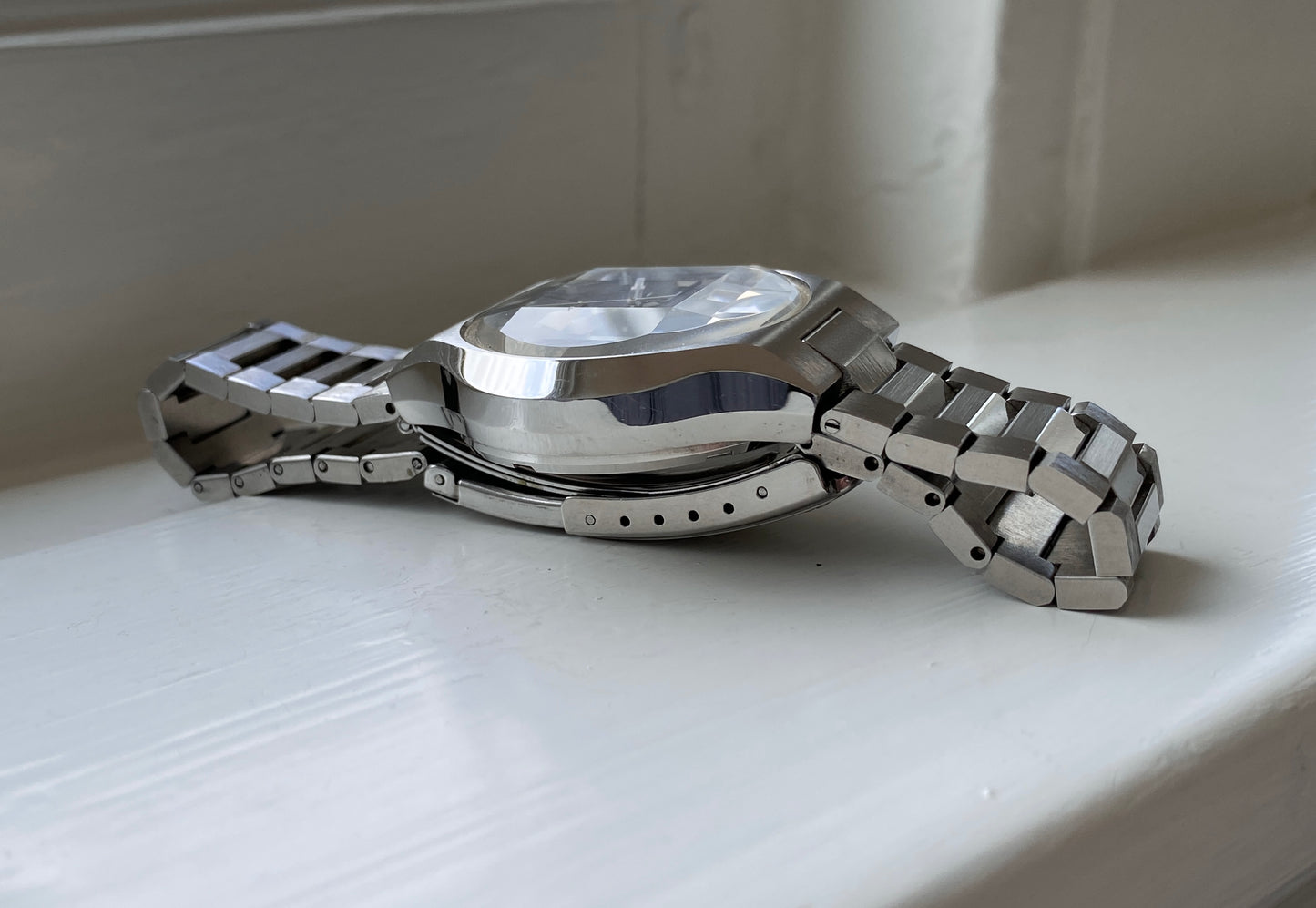Seiko QR 3863-8000 NOS
Seiko QR 3863-8000 NOS
Couldn't load pickup availability
|
Brand |
Seiko |
|
Model |
QR |
|
Reference |
3863-8000 |
|
Year |
1984 - April |
|
Movement |
Quartz |
|
Extras |
JDM | NOS condition |
|
Dial |
Blue textured snowflake |
|
Jewels |
9 jewels |
|
Case |
38mm |
|
Lugs |
10mm |
|
Day/date |
Day and date |
|
Crystal |
Mineral | Faceted |
|
Bracelet |
Integrated bracelet with original sticker |
|
Performance |
<20 seconds per month |
|
Box/papers |
Not included |
|
Condition |
Perfect | New old stock |
The watch
In exceptional unpolished ‘new old stock’ condition. One of our personal favourites, this Seiko Quartz QR from 1984. Featuring a crazy textured dial and a mesmerizing faceted crystal. It has been serviced by a professional watchmaker. The day can be displayed in Japanese Kanji or English.The (original) bracelet is at full length and still contains the original sticker on the inside. The crystal has a few tiny scratches, barely visible.
Details
The Seiko QR lineup was one of the first commercially available quartz watches, and was extremely high end for its time, commanding a launch price of ~50,000 Yen which was comparable to Grand Seikos of that era.
The Quartz Crisis
The "Quartz Crisis," also known as the "Quartz Revolution," refers to a period in the late 20th century when the Swiss watch industry faced significant upheaval due to the rise of quartz technology. This technological shift began in the 1960s and 1970s, primarily driven by Japanese companies like Seiko.
Quartz watches, which use a battery-powered quartz crystal to keep time, offered several advantages over traditional mechanical watches. They were more accurate, less expensive to produce, and required less maintenance. Seiko, a pioneer in quartz technology, introduced the world's first quartz watch, the Astron, in 1969. This innovation demonstrated that quartz watches could offer precision and affordability, challenging the long-standing dominance of Swiss mechanical watches.
The Swiss watch industry, which had long been revered for its craftsmanship and mechanical expertise, struggled to adapt to this new technology. Many Swiss companies initially underestimated the impact of quartz watches and were slow to innovate. As a result, they faced financial difficulties and market share losses. The Quartz Crisis led to the decline or bankruptcy of several traditional Swiss watchmakers and forced the industry to undergo significant restructuring.
Ultimately, the Quartz Crisis reshaped the watch industry, leading to a renewed focus on innovation and a blend of traditional and modern technologies. The Swiss watch industry eventually rebounded by incorporating quartz technology alongside their mechanical expertise.



